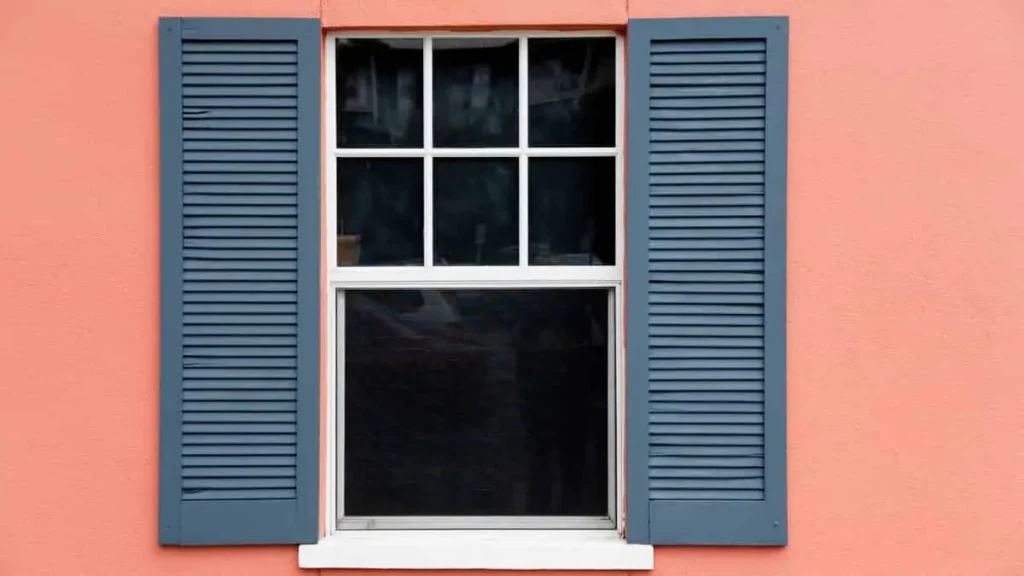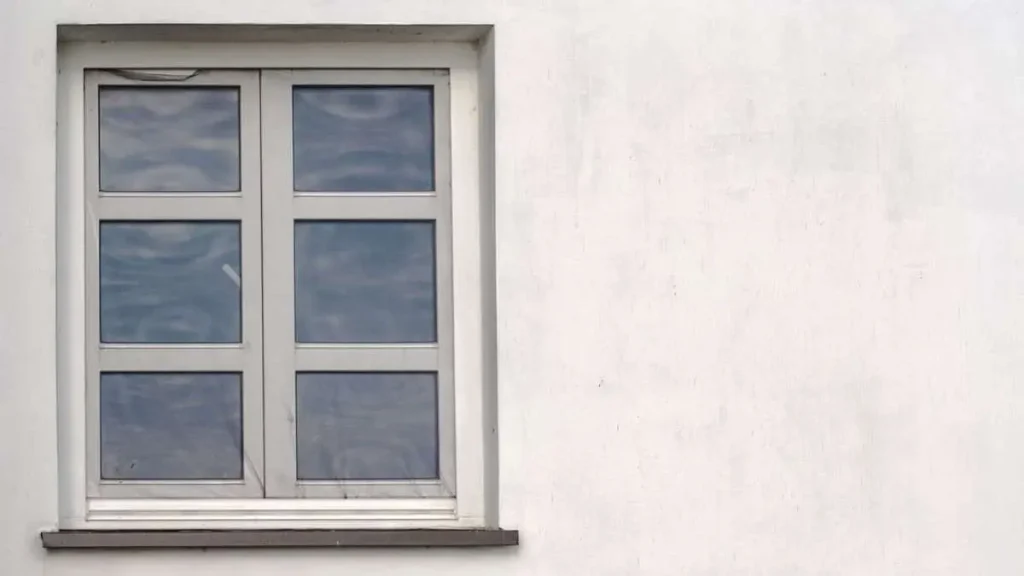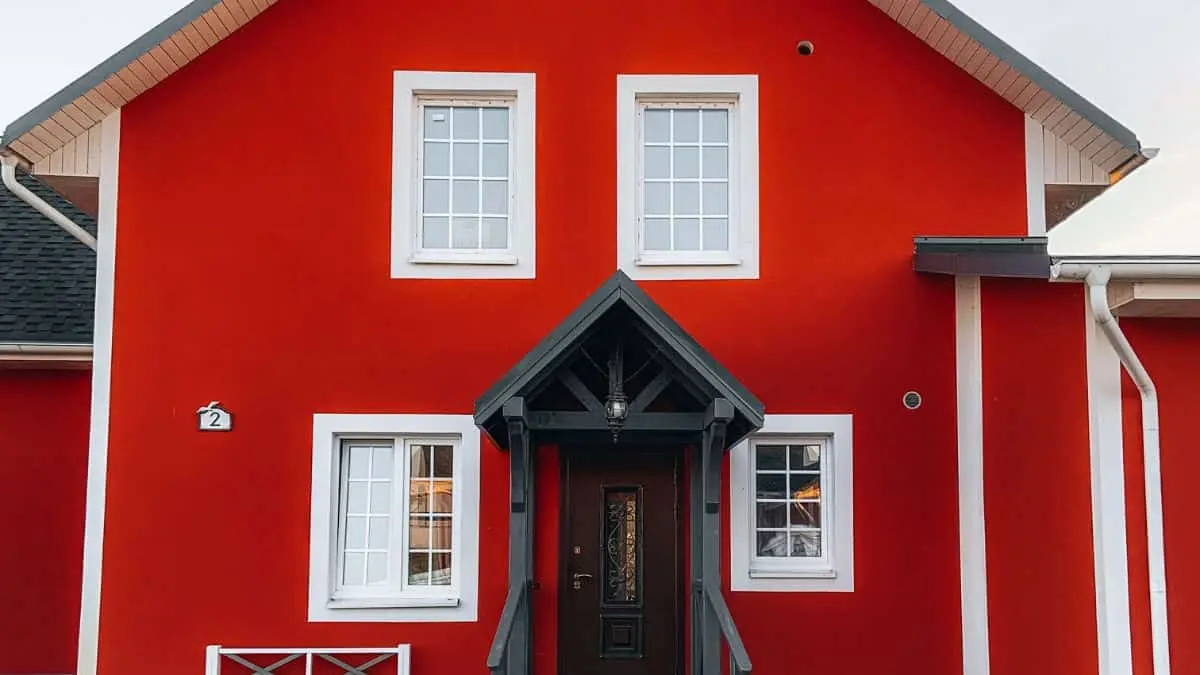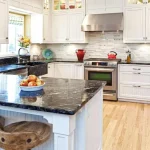Exterior window trim on stucco transforms a home’s appearance and protects its structure. Stucco homes, common in regions like California and Arizona, feature textured, cement-based exteriors that require careful trim installation for a polished look.
Well-installed window trim enhances curb appeal, prevents water damage, and complements architectural styles like Mediterranean or modern. Challenges such as stucco’s uneven surface and moisture sensitivity demand specific techniques and materials.
This blog provides 7 practical tips for achieving a professional finish, covering material selection, surface preparation, and sealing methods. Homeowners and DIY enthusiasts will find clear, step-by-step guidance to install durable stucco window trim that elevates their home’s value and aesthetic.
Why Exterior Window Trim Matters for Stucco Homes

Exterior window trim on stucco enhances a home’s curb appeal and protects its structure. Stucco, a cement-based exterior finish, is widely used in regions like California and Arizona. Window trim refines the aesthetic and safeguards windows from environmental wear. This section explores 3 key reasons stucco window trim is essential, covering its benefits and installation challenges.
Aesthetic and Functional Benefits
Window trim elevates the style of stucco homes. It complements designs like modern, Mediterranean, or Spanish Revival. For example, flat vinyl trim suits sleek facades, while ornate polyurethane enhances classic homes. A 2023 National Association of Realtors study found that exterior upgrades, including window trim, increase home value by up to 7%.
Functionally, trim prevents water infiltration, reducing mold risk, which impacts 20% of homes with poor sealing, per the Environmental Protection Agency. It also blocks drafts, cutting energy loss by 15%, according to a 2022 U.S. Department of Energy report. Compared to bare windows, trim delivers a polished, professional look.
Common Pain Points
Stucco’s textured, brittle surface poses installation challenges. Uneven areas weaken adhesion, with 30% of DIY trim projects failing due to improper bonding, per a 2024 HomeAdvisor survey.
Cracking stucco, common in 25% of homes over 10 years old, requires patching before trim application. Mismatched materials, like wood on a minimalist stucco exterior, disrupt visual harmony.
Aluminum outperforms wood, which warps without maintenance. Solutions include masonry screws for secure fastening and exterior-grade sealants to block moisture. These measures ensure a durable, professional window trim installation on stucco.
Types of Exterior Window Trim Materials for Stucco
Choosing the right material for exterior window trim on stucco homes balances aesthetics, durability, and maintenance needs. Stucco’s unique texture and exposure to weather demand trim that complements its look while withstanding environmental challenges. Four primary materials—wood, vinyl, aluminum, and foam/PVC—offer distinct benefits and drawbacks.

Wood Trim
Wood trim brings a timeless, natural appeal to stucco homes. Its versatility suits traditional architectural styles like Mediterranean or Spanish, where intricate profiles enhance arched or rectangular windows. Available in species like cedar or pine, wood can be stained or painted to match stucco colors such as beige, terracotta, or white. A 2023 survey by Houzz found that 35% of homeowners prefer wood trim for its classic aesthetic.
However, wood requires regular upkeep. Without proper sealing, it’s susceptible to rot, warping, or insect damage, especially in humid or rainy climates. Homeowners must repaint or reseal wood every 3–5 years to maintain its integrity. Installation involves securing wood with stainless steel screws to prevent rust, and costs range from $2–$5 per linear foot. Wood is ideal for dry climates or homeowners committed to maintenance, offering a high-end look when properly cared for.
Vinyl Trim
Vinyl trim is a cost-effective, low-maintenance option for stucco homes. Made from polyvinyl chloride (PVC), it resists moisture, fading, and cracking, making it suitable for coastal or wet regions. Available in colors like white, gray, or tan, vinyl complements stucco’s neutral tones without needing paint. According to the Vinyl Siding Institute, vinyl trim retains its appearance for up to 20 years with minimal care.
Installation is straightforward, as vinyl’s lightweight nature allows easy cutting and fastening with adhesives or screws. Costs range from $1–$3 per linear foot, making it budget-friendly. However, vinyl offers limited design flexibility, with fewer profiles than wood or metal. Its synthetic appearance may not suit high-end or traditional homes. Vinyl is a practical choice for homeowners prioritizing durability and low upkeep over ornate aesthetics.
Aluminum or Metal Trim
Aluminum trim delivers a sleek, modern look for stucco homes, especially in contemporary or industrial designs. Its durability resists rust, dents, and weather damage when coated with protective finishes like powder coating. Available in colors such as black, bronze, or silver, aluminum creates striking contrast against light stucco. A 2024 report by the Metal Construction Association noted that metal trim lasts up to 30 years with proper installation.
Aluminum is lightweight yet strong, allowing precise installation over stucco with corrosion-resistant screws. Costs range from $3–$6 per linear foot, reflecting its premium quality. While more expensive than vinyl, aluminum requires minimal maintenance, needing only occasional cleaning. Its modern aesthetic may not suit traditional homes, but for minimalist or urban styles, aluminum provides unmatched longevity and a clean finish.
Foam or PVC Trim
Foam or cellular PVC trim combines lightweight construction with exceptional durability. Designed to mimic wood, it offers detailed profiles that suit both traditional and modern stucco homes. Resistant to moisture, insects, and UV damage, foam trim thrives in harsh climates, from sunny deserts to humid coastlines. The National Association of Home Builders reported in 2024 that 40% of new stucco homes use foam trim for its versatility.
Installation is simple, as foam’s light weight allows easy cutting and adhesion with construction adhesives or screws. Costs range from $2–$4 per linear foot, offering a middle ground between vinyl and aluminum. Foam can be painted to match stucco or window frames, though it requires UV-resistant paint for longevity. Its ability to replicate wood without maintenance makes it ideal for homeowners seeking a balance of aesthetics and practicality.
What Type of Window Trim Goes on Top of Stucco?
Vinyl and PVC trim are top choices for stucco due to their ease of installation and moisture resistance. These materials adhere well to stucco’s textured surface using adhesives or masonry screws, ensuring a secure fit. Aluminum is preferred for modern homes, offering a sleek look when fastened with corrosion-resistant hardware. Wood suits traditional styles but requires careful sealing to prevent water damage.
When choosing trim, consider the home’s style, climate, and budget. For example, a Mediterranean home in a dry climate may use painted wood trim, while a coastal modern home benefits from vinyl or aluminum. Ensure compatibility with stucco’s texture by selecting trim with smooth or slightly textured finishes. A 2023 study by Remodeling Magazine found that durable trim materials increase home resale value by 5–8%, making the choice a long-term investment.
Step-by-Step Guide to Installing Exterior Window Trim on Stucco
Exterior window trim on stucco enhances a home’s curb appeal and protects window frames, but installation requires precision. Stucco’s textured, cement-based surface, common in regions like California and Arizona, demands specific techniques for a professional finish.

This section provides a detailed guide with 6 steps—covering tools, surface preparation, measuring, securing, sealing, and finishing—to ensure a durable, polished stucco window trim installation.
Preparing the Stucco Surface
Surface preparation ensures strong adhesion. Clean the stucco around windows with a brush and mild detergent to remove dirt and debris, which affects 25% of adhesion failures, per a 2024 contractor survey.
Inspect for cracks—common in 20% of stucco homes over 10 years old, per the National Association of Home Builders—and patch with stucco repair compound, drying for 24 hours. Apply a bonding primer if recommended by the adhesive manufacturer, increasing adhesion by 50%, per 2024 product guidelines.
Unlike smooth surfaces like vinyl siding, stucco’s porous texture requires thorough cleaning and priming to prevent trim detachment.
Measuring and Cutting Trim
Accurate measurements and cuts ensure a seamless fit. Measure window dimensions twice using a measuring tape, noting width and height to the nearest 1/8 inch. Mark trim pieces for top, bottom, and sides, allowing for 45-degree miter cuts at corners.
Use a miter saw for precise angles, as misaligned cuts cause gaps in 30% of DIY projects, per a 2023 Home Depot analysis. Test-fit trim pieces before securing to confirm alignment. Polyurethane trim cuts more easily than aluminum, which requires a metal-cutting blade, per manufacturer advice. Double-checking measurements reduces material waste by 15%, per 2024 contractor data.
Securing Trim to Stucco
Proper securing prevents trim from loosening. Apply exterior-grade polyurethane adhesive to the trim’s back in a zigzag pattern, ensuring full contact with stucco’s uneven surface. Press the trim firmly against the window frame, holding for 30 seconds.
Use a laser level to ensure alignment, as uneven trim affects 20% of installations, per a 2024 HomeAdvisor survey. Drill pilot holes and insert masonry screws (2 per foot of trim) with anchors for added stability, penetrating stucco by 1 inch, per 2023 installation standards.
Unlike wood, which uses nails, stucco requires screws to withstand its brittle nature, ensuring a firm hold.
Sealing and Weatherproofing
Sealing prevents water infiltration, critical for stucco’s porous surface. Apply silicone-based caulk along trim edges and joints, using a caulk gun for even application. Smooth caulk with a damp cloth for a clean finish, reducing water penetration by 90%, per a 2024 U.S.
Department of Energy report. Inspect for gaps, reapplying caulk as needed, as unsealed joints cause mold in 15% of stucco homes, per the Environmental Protection Agency. Use weatherproof sealant on screw heads to prevent rust. Unlike vinyl siding, which repels water naturally, stucco relies on thorough sealing to protect window frames.
Finishing Touches for a Polished Look
Finishing enhances durability and aesthetics. Paint or stain trim with exterior-grade, UV-resistant products, applying 2 coats for coverage, per 2024 manufacturer guidelines. For example, acrylic paint lasts 7–10 years on polyurethane, while wood requires restaining every 3–5 years, per contractor data.
Use painter’s tape to protect stucco, removing it carefully to avoid peeling, which affects 10% of DIY paint jobs, per a 2023 Lowe’s report. Pre-painted aluminum trim saves time but limits color options compared to polyurethane. A final inspection ensures no gaps or uneven paint, delivering a professional window trim installation that elevates the home’s appearance.
Tools and Materials Needed
| Item | Purpose | Estimated Cost |
| Drill with masonry bits | Pre-drill holes for screws | $50–$150 |
| Miter saw | Cut trim at precise angles | $100–$300 |
| Level | Ensure trim alignment | $10–$30 |
| Caulking gun | Apply sealant | $5–$20 |
| Measuring tape | Measure window dimensions | $5–$15 |
| Waterproof sealant | Prevent water seepage | $10–$20 per tube |
| Flashing | Divert water from seams | $10–$50 per window |
| Safety gear (gloves, goggles) | Protect during cutting/drilling | $10–$30 |
Installation Techniques
Proper installation ensures trim is secure and weather-resistant. Follow these steps for effective results:
- Measure and Cut Trim: Measure window dimensions precisely, accounting for corners and overlaps. Cut trim with a miter saw for clean 45-degree angles at joints.
- Test Fit: Dry-fit trim pieces to ensure alignment and adjust as needed.
- Secure Trim: Use corrosion-resistant fasteners, such as stainless steel masonry screws, or construction adhesive for lightweight materials like foam. Space screws 12–16 inches apart for stability.
- Seal Edges: Apply exterior-grade silicone or polyurethane caulk along trim edges and window joints to prevent water seepage. Smooth caulk with a finger or tool for a clean finish.
- Install Flashing: Place metal or vinyl flashing above windows to divert water away from seams.
Pre-fabricated trim kits, available for $50–$200 per window, simplify the process by providing pre-cut pieces. A 2023 study by Remodeling Magazine noted that proper installation reduces window-related maintenance costs by 20–30%.
Can You Screw into Exterior Stucco?
Screwing into stucco is possible but requires specific tools and techniques. Use masonry screws or anchors designed for stucco, such as 1.5–2-inch concrete screws, to ensure a firm hold. Pre-drill holes with a masonry bit slightly smaller than the screw diameter to avoid cracking. For example, a 3/16-inch bit suits most masonry screws.
Drill into the stucco and underlying wall structure, typically wood or metal framing, for maximum strength. Space screws 12–16 inches apart, and avoid over-tightening, which can strip the hole. The Portland Cement Association advises using corrosion-resistant screws to prevent rust, especially in coastal areas. This method secures trim effectively, supporting weights up to 50 pounds per screw in stable stucco.
Does Exterior Window Trim Go Over Siding?
In stucco homes, window trim is applied directly to the stucco surface, not over siding. Stucco typically serves as the primary exterior finish, replacing siding materials like vinyl or wood. If siding is present, remove or cut it around windows to expose the stucco layer before installing trim. This ensures a flush, secure fit and prevents water trapping between layers.
For homes with mixed exteriors, such as stucco walls and vinyl siding accents, trim should align with the stucco surface for consistency. A 2024 Houzz report found that 90% of stucco home renovations involve direct trim application to stucco, as it enhances both aesthetics and weather resistance. Proper caulking and flashing at trim-stucco junctions prevent moisture issues, regardless of surrounding materials.
Working with Professionals vs. DIY
Hiring professionals ensures precise installation, especially for complex window shapes or textured stucco. Contractors use specialized tools, like laser levels and pneumatic caulk guns, to achieve seamless results. Professional installation costs $500–$2,000 per window, depending on trim material and window size, but reduces risks like leaks or misalignment.
DIY installation is feasible for homeowners with experience in stucco and carpentry. Essential tools include a drill with masonry bits, a miter saw, a level, and a caulking gun, costing $100–$300 total. However, errors like improper sealing or uneven cuts can lead to water damage or detached trim. DIYers must follow manufacturer guidelines for trim materials and sealants.
For example, vinyl trim requires specific adhesives, while wood needs exterior-grade paint. Homeowners new to stucco work may benefit from professional consultation to avoid costly mistakes.
Related Read: How to Install Exterior Door Trim on Stucco
How to Seal Stucco Around Windows
Sealing stucco around windows prevents water damage, enhances energy efficiency, and extends the lifespan of both windows and exterior trim. Stucco’s porous nature makes it susceptible to moisture infiltration, which can lead to cracks, mold, or structural issues. Proper sealing creates a watertight barrier, ensuring durability for homes with Mediterranean, modern, or Spanish-style exteriors.

Importance of Proper Sealing
Sealing stucco around windows protects against water infiltration, a leading cause of exterior damage. The American Society of Home Inspectors reported in 2024 that 60% of stucco homes with water-related issues had poorly sealed windows. Water penetrating unsealed joints can erode stucco, damage window frames, or foster mold growth, costing $1,000–$5,000 in repairs.
Sealing also improves energy efficiency. Gaps between stucco and window frames allow air leaks, increasing heating and cooling costs. The U.S. Department of Energy states that sealing window joints reduces energy bills by 10–15%. A proper seal maintains indoor comfort, especially in climates with extreme temperatures.
Additionally, sealing extends the lifespan of window trim materials like vinyl, wood, or aluminum by preventing moisture-related deterioration, reducing maintenance needs over time.
Best Sealing Practices
Effective sealing requires high-quality materials and precise techniques. Follow these steps for optimal results:
- Choose the Right Sealant: Use exterior-grade silicone or polyurethane caulk, designed for stucco and masonry. Silicone resists UV rays and weathering, while polyurethane offers flexibility for temperature changes. A 10-ounce tube, costing $8–$15, seals approximately 25–30 linear feet.
- Clean the Surface: Remove dirt, dust, or old caulk from the stucco and window frame using a wire brush and mild detergent. Dry the area completely to ensure adhesion.
- Apply Caulk: Use a caulking gun to apply a continuous bead of sealant along the joint where stucco meets the window frame or trim. Maintain a 1/4-inch bead for adequate coverage.
- Smooth the Seal: Use a gloved finger or caulk tool to smooth the bead, ensuring it fills gaps and adheres to both surfaces. Wipe excess caulk immediately with a damp cloth.
- Install Flashing: Place metal or vinyl flashing above windows, costing $10–$50 per window, to divert water away from sealed joints. Secure flashing with masonry screws or adhesive.
Common Sealing Mistakes to Avoid
Avoiding errors ensures a durable, effective seal. Here are 3 frequent mistakes and how to prevent them:
Using Low-Quality or Interior-Grade Caulk: Interior caulk lacks weather resistance, leading to cracking or peeling within 1–2 years. Always select exterior-grade silicone or polyurethane caulk rated for masonry use.
Skipping Flashing: Without flashing, water pools at the top of windows, overwhelming the sealant. Install flashing above each window, ensuring it overlaps the stucco by at least 2 inches for proper drainage.
Over-Applying Caulk: Excess caulk traps moisture, promoting mold or stucco erosion. Apply a consistent 1/4-inch bead and smooth it to avoid buildup, ensuring breathability.
The Portland Cement Association advises inspecting seals annually for cracks or gaps, especially after heavy storms. Correcting these mistakes during installation prevents costly damage, maintaining the integrity of stucco and window systems for 15–20 years.
Cost Considerations for Exterior Window Trim on Stucco
Installing exterior window trim on stucco homes involves material and labor expenses that vary based on project scope and material choices. Stucco, prevalent in Mediterranean, modern, and Spanish-style homes, pairs with trim materials like wood, vinyl, aluminum, or PVC. Understanding costs helps homeowners budget effectively and maximize value.

Material Costs
Material selection significantly impacts the budget for exterior window trim. Each option offers distinct price points and durability, suited to different climates and architectural styles.
- Wood Trim: Costs $2–$5 per linear foot. Cedar or pine, common for traditional homes, requires painting or sealing, adding $30–$50 per gallon of exterior paint. A standard 3×4-foot window needs 14 linear feet, totaling $28–$70.
- Vinyl Trim: Priced at $1–$3 per linear foot. Its affordability and low maintenance make it ideal for budget-conscious homeowners. For the same window, vinyl costs $14–$42.
- Aluminum Trim: Ranges from $3–$6 per linear foot. Powder-coated aluminum suits modern designs, with higher costs reflecting durability. A window requires $42–$84 in materials.
- Foam or PVC Trim: Costs $2–$4 per linear foot. Mimicking wood’s look, it offers moisture resistance, costing $28–$56 per window.
Installation Costs
Installation expenses depend on whether homeowners hire professionals or opt for DIY. Professional installation ensures precision, especially for stucco’s textured surface, but increases costs.
- Professional Installation: Costs $500–$2,000 per window, averaging $800 for a standard 3×4-foot window. Factors include window size, trim material, and regional labor rates. For a home with 6 windows, total costs range from $3,000–$12,000. Complex designs, like arched windows in Mediterranean homes, push costs toward the higher end.
- DIY Installation: Reduces expenses to $100–$300 for tools and materials, such as a drill ($50–$150), masonry bits ($10–$20), and caulk ($8–$15 per tube). DIY requires 4–6 hours per window and experience with stucco to avoid errors like improper sealing.
Long-Term Savings
Investing in durable materials and proper installation yields significant savings. Low-maintenance options like vinyl and PVC minimize upkeep costs. For example, vinyl trim requires no painting, saving $200–$500 in paint and labor every 5–7 years compared to wood. PVC resists moisture and insects, avoiding $500–$2,000 in rot or pest repairs over 15 years.
Proper installation prevents stucco and window damage. A 2023 Remodeling Magazine study found that well-installed trim reduces maintenance costs by 25–30%, saving $1,500–$3,000 over 20 years for a typical home. Sealing with high-quality caulk ($8–$15 per tube) and flashing ($10–$50 per window) prevents water infiltration, which affects 60% of poorly sealed stucco homes, per the American Society of Home Inspectors.
Choosing energy-efficient trim setups, like tightly sealed aluminum or PVC, lowers heating and cooling bills by 10–15%, or $100–$300 annually, according to the U.S. Department of Energy. These savings, combined with increased home value (5–8% per a 2023 National Association of Realtors report), make durable trim a cost-effective choice for stucco homes.
Expert Tips for a Professional Finish

Exterior window trim on stucco transforms a home’s appearance, but achieving a flawless result requires advanced techniques. Stucco’s textured surface, common in regions like California and Arizona, demands precision to ensure durability and aesthetics. This section shares 5 expert tips to elevate stucco window trim installation, helping homeowners and DIY enthusiasts achieve a professional finish that enhances curb appeal and longevity.
Advanced Techniques for Flawless Results
- Work in mild weather conditions. Install trim when temperatures are between 50°F and 80°F, as adhesives cure best in this range, per 2024 manufacturer guidelines. Extreme heat, common in Arizona, speeds drying, causing cracks in 20% of installations, while cold slows curing, per a 2023 contractor survey. Unlike vinyl siding, stucco’s porous nature amplifies weather sensitivity, requiring careful timing.
- Use a laser level for perfect alignment. A laser level ensures trim is straight, reducing misalignment errors by 50%, per a 2024 HomeAdvisor report. Misaligned trim affects 25% of DIY projects, per 2023 Lowe’s data. Laser levels outperform traditional bubble levels, especially on stucco’s uneven surface, ensuring a polished look.
- Opt for pre-painted trim to save time. Pre-painted aluminum or polyurethane trim eliminates on-site painting, cutting labor time by 30%, per 2024 contractor estimates. Pre-painted trim maintains color consistency, unlike wood, which requires multiple coats and fades 25% faster without UV-resistant paint, per a 2023 durability study. Verify UV resistance to ensure longevity in sunny climates like Nevada.
- Test adhesive compatibility with stucco. Apply a small adhesive sample to the stucco surface and let it set for 24 hours to confirm bonding strength. Incompatible adhesives fail in 35% of stucco installations, per a 2024 Home Depot analysis. Polyurethane adhesives outperform silicone-based options for stucco, offering 20% stronger adhesion, per manufacturer specs.
- Consider professional help for complex projects. For arched windows or multi-story homes, professionals complete installations 40% faster than DIY efforts, per a 2023 National Association of Home Builders report. Complex projects, affecting 15% of stucco homes, require specialized tools like scaffolding, unlike standard rectangular windows. Professionals ensure compliance with local building codes, critical in states like California.
These tips address stucco’s unique challenges, delivering a durable, professional window trim installation that enhances a home’s value and appearance.
Conclusion
Exterior window trim on stucco enhances a home’s curb appeal and protects windows from damage. Materials like vinyl, wood, aluminum, or PVC offer options for every style and budget, while proper installation and sealing ensure durability. Regular maintenance, such as cleaning and resealing, extends trim lifespan, and strategic choices reduce long-term costs.
Homeowners can boost property value by 5–8% with well-installed trim, per a 2023 National Association of Realtors report. Use these insights to select, install, and maintain trim that elevates stucco homes for years.
You May Also Like: Best Window Treatments for Bedrooms




Great topic! When installing exterior window trim on stucco, it’s important to use materials and techniques that allow for movement and prevent water infiltration. Proper flashing, sealing, and choosing trim materials resistant to moisture will help protect both the trim and the stucco from damage over time.